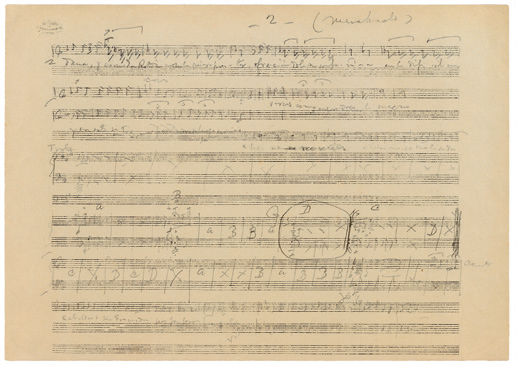

Manuel de Falla. Apuntes para la intervención inicial del Trujamán en El retablo de maese Pedro. Archivo Manuel de Falla, Granada.
“When I lie down, every night, my mind is bombarded with new ideas and new projects, and in each of them I long to revamp my technique, reinvent my system of procedures, change facets to reveal a new colour”, Falla told Adolfo Salazar in 1921.
The starting gun for El retablo de maese Pedro was fired on 25 October 1918, when the Prin-cesse de Polignac wrote a letter to Falla commissioning the work. A month and a half later, the composer informed her of his proposed theme: Chapter 26 in the second part of Don Quixote, more specifically the show put on by Master Peter’s travelling puppet theatre. And so began a long musical gestation, which ended when Falla gave birth to a new work and, more impor-tantly, a new style. He spent more than four years labouring over its composition, and despite his almost total silence regarding the work during that time, we can trace its evolution through his drafts and manuscripts. Over four years of doubts, regrets, changes and daring solutions upset Falla’s own compositional style, charting a course into territory hitherto unexplored by twentieth-century Spanish music.
Títeres de cachiporra, a traditional puppet show organised by Federico García Lorca, Manuel de Falla and Hermenegildo Lanz on 6 January 1923, and the premiere of the concert version of the Retablo in Seville on 23 and 24 March of that same year can both be considered trial runs or rehearsals.
